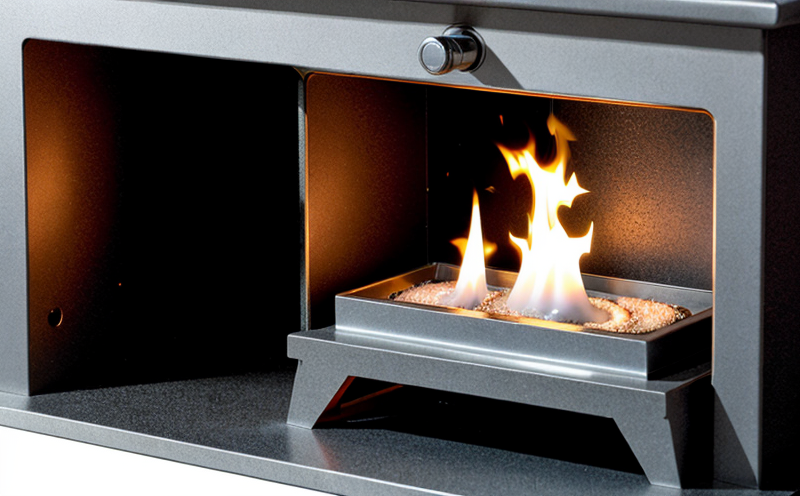Surface Flame Spread Testing of Packaging Materials
In fire safety testing, Surface Flame Spread (SFS) tests are critical in evaluating how packaging materials behave when exposed to flames. This test is particularly important for ensuring that products meet regulatory standards and enhance public safety. The objective of this service is to determine the rate at which a material spreads flame across its surface.
The SFS test involves placing a specimen on a horizontal surface and exposing it to a standard flame source according to internationally recognized standards such as ISO 5660-1, ASTM E84, or EN 459. The rate of spread is measured in terms of distance the flame travels across the sample per unit time.
During this process, various factors influence the outcome of the test including the material's chemical composition, surface texture, and thickness. These characteristics can significantly impact how quickly or slowly a fire may spread along the material’s surface. Understanding these parameters is crucial for developing materials that are both safe and effective.
The testing procedure starts by carefully preparing the specimen to ensure consistency across samples. This includes trimming edges, removing any coatings or finishes, and ensuring uniform thickness throughout the sample. Once prepared, the specimen is placed on a standardized testing apparatus designed to simulate real-world conditions as closely as possible.
During the test, the flame source is ignited under controlled conditions, and the time it takes for the fire to reach specific points along the material’s length is recorded. This data helps quantify the rate of flame spread across different sections of the specimen. After testing, all specimens are thoroughly examined for signs of damage or deformation that could indicate increased flammability.
The results of these tests play a vital role in determining whether materials comply with relevant regulations and guidelines. For instance, manufacturers often use SFS test data when seeking certification under standards like UL 746C for packaging materials intended to be used near heat sources or open flames.
By conducting thorough Surface Flame Spread Testing, companies can identify potential hazards early in the product development cycle, allowing them to make necessary adjustments before mass production begins. This proactive approach not only enhances safety but also protects brand reputation by minimizing risks associated with non-compliant products entering the market.
- Regulatory Compliance: Ensures adherence to national and international fire safety regulations.
- Better Product Design: Helps refine materials for improved performance in challenging environments.
- Enhanced Consumer Safety: Reduces the risk of accidental fires caused by packaging materials.
Applied Standards
The Surface Flame Spread Testing service adheres to several key standards that guide testing procedures and interpretation of results. These include ISO 5660-1, ASTM E84, EN 459, and UL 746C among others.
ISO 5660-1 provides guidelines for the horizontal flame spread test method using a specific size and shape specimen. This standard ensures consistency across laboratories conducting similar tests worldwide. Similarly, ASTM E84 defines procedures for testing smoke production and flame propagation characteristics of building materials under standardized conditions.
EN 459 specifies requirements for fire resistance tests on certain types of packaging used in conjunction with heat sources or open flames. UL 746C focuses specifically on packaging intended to be near heat sources, setting out detailed criteria for evaluating flammability and flame spread behavior.
The application of these standards ensures that the testing process remains rigorous and objective, providing reliable data that can be used confidently by manufacturers and regulators alike. By aligning with such internationally recognized protocols, we guarantee accurate assessment of packaging materials’ fire safety properties.
Environmental and Sustainability Contributions
Surface Flame Spread Testing contributes positively to environmental sustainability efforts by promoting the development of safer, more durable packaging solutions. By identifying materials that perform well in flame spread tests early in the design phase, manufacturers can avoid costly redesigns later on.
This proactive approach helps reduce waste and resource consumption associated with unsuccessful product launches. Moreover, materials that pass stringent fire safety standards are less likely to contribute to accidental fires, thereby minimizing environmental damage caused by wildfires or other combustion events linked to improperly designed packaging.
Additionally, sustainable practices within the laboratory itself play a role in this contribution. Energy-efficient operations and waste management systems help minimize the carbon footprint of our testing facilities while also supporting broader industry initiatives aimed at reducing overall environmental impact.
Use Cases and Application Examples
- Packaging for Electronics: Ensures that materials used in packaging sensitive electronic devices can withstand accidental exposure to fire without causing further damage or risk of short-circuiting.
- Cooking Appliances Packaging: Guarantees that containers holding foodstuffs near heat sources are safe from catching alight, protecting both consumers and stored products.
- Medical Device Packaging: Verifies that sterile wrapping materials do not pose additional fire hazards when used in conjunction with medical equipment or devices.
- Retail Store Displays: Helps retailers select appropriate packaging for displays located near open flames, ensuring compliance with local fire codes and enhancing overall safety.





